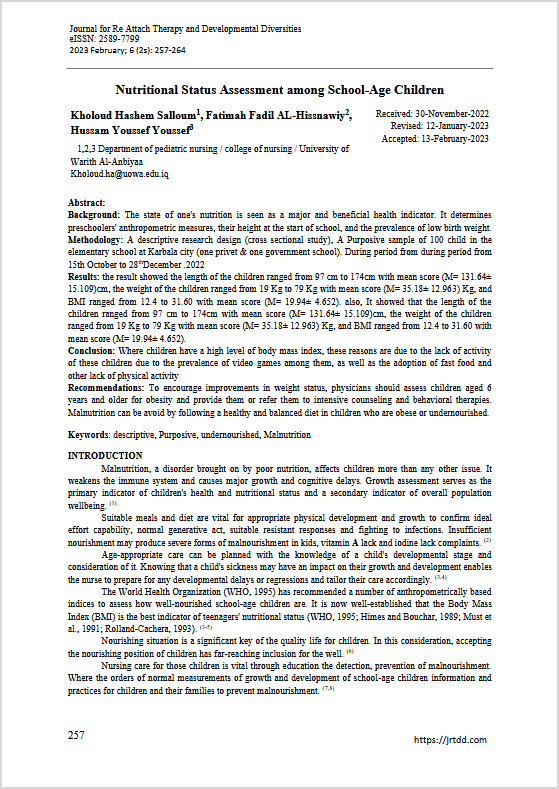Nutritional Status Assessment among School-Age Children
Main Article Content
Abstract
Background: The state of one's nutrition is seen as a major and beneficial health indicator. It determines preschoolers' anthropometric measures, their height at the start of school, and the prevalence of low birth weight. Methodology: A descriptive research design (cross sectional study), A Purposive sample of 100 child in the elementary school at Karbala city (one privet & one government school). During period from during period from 15th October to 28thDecember .2022
Results: the result showed the length of the children ranged from 97 cm to 174cm with mean score (M= 131.64± 15.109)cm, the weight of the children ranged from 19 Kg to 79 Kg with mean score (M= 35.18± 12.963) Kg, and BMI ranged from 12.4 to 31.60 with mean score (M= 19.94± 4.652). also, It showed that the length of the children ranged from 97 cm to 174cm with mean score (M= 131.64± 15.109)cm, the weight of the children ranged from 19 Kg to 79 Kg with mean score (M= 35.18± 12.963) Kg, and BMI ranged from 12.4 to 31.60 with mean score (M= 19.94± 4.652).
Conclusion: Where children have a high level of body mass index, these reasons are due to the lack of activity of these children due to the prevalence of video games among them, as well as the adoption of fast food and other lack of physical activity
Recommendations: To encourage improvements in weight status, physicians should assess children aged 6 years and older for obesity and provide them or refer them to intensive counseling and behavioral therapies. Malnutrition can be avoid by following a healthy and balanced diet in children who are obese or undernourished.

